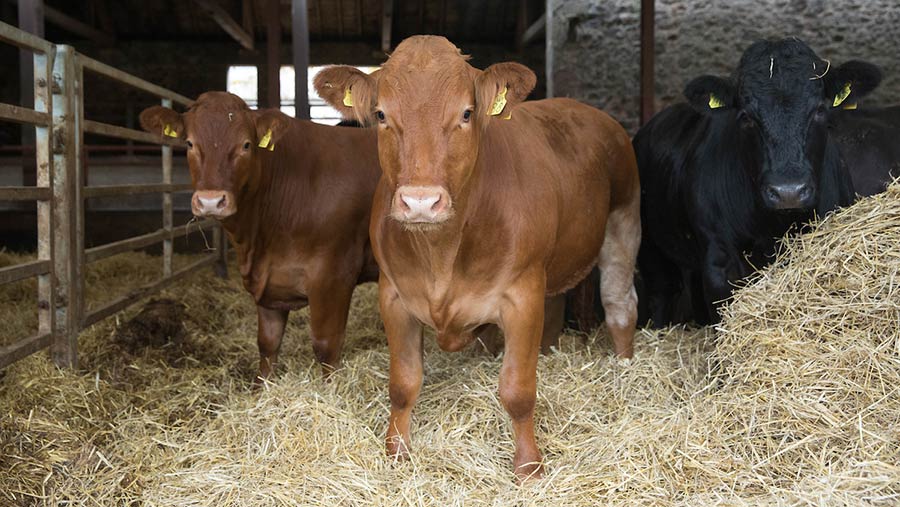Beef trade braced for 5% drop in weekly kill
 © Tim Scrivener
© Tim Scrivener Cattle procurement teams are expecting a 5% contraction in beef animals in a year’s time based on reduced suckler calf numbers.
Trade insiders expect this to be affecting weekly kill figures at abattoirs later this year and into 2025.
Suckler-bred calves and dairy bull calves for the six-month period between April and September 2023 (inclusive) are 51,010-head down on the same period in 2022.
See also: Reviewed ABP grid heeds dairy-beef trend
Almost 97% of this drop is due to fewer beef-bred calves, AHDB calculations show (see “Great Britain calf registrations by dam type”).
Analysts say this drop correlates to fewer cows being put to the bull in the second half of 2022 due to:
- A grass and forage shortage across much of the UK during the 2022 drought
- Conservative stocking rates, with fertiliser costing £600-£1,000/t
- Widespread suckler herd downsizing and dispersal, particularly by older farmers.
- A 23% increase in cow slaughter for the six months of August 2022 to February 2023 as more cows were culled rather than being put back to the bull.
- In fact, slaughter figures for that six-month period climbed from 74,500 head in 2021-22 to 92,100 in 2022-23 and were 88,600-head in 2023-24.
This intensified a 10-year trend in which the UK suckler herd has contracted 12.6% (203,837 head) according to Defra’s livestock census.
Auctioneers expect this to drive prices for suckled calves and suckler-bred store cattle higher.
However, with average base prices at £5/kg, retailers are concerned about price resistance from customers.
Calculation
Farmers Weekly understands beef traders are predicting 47,600 fewer prime cattle, which accounts for a 16% suckler herd replacement rate because not all the beef animals would have reached slaughter age as prime animals.
Spread over a six-month period, sources have suggested this may amount to 1,830 fewer cattle available for slaughter each week on average in about a year’s time.
Based on an approximate average weekly kill of 35,000 head, this represents a 5.2% contraction.
Great Britain calf registrations by dam type, April to September (inclusive) |
||||
|
Calves from dairy dams |
2022 |
2023 |
Change |
% Change |
|
Dairy females |
253,591 |
249,151 |
-4,440 |
-1.75 |
|
Dairy males |
80,394 |
65,008 |
-15,386 |
-19.1% |
|
Beef females |
181,674 |
189,155 |
7,481 |
+4.11% |
|
Beef males |
197,608 |
204,785 |
7,177 |
+3.6% |
|
Calves from suckler dam |
||||
|
Dairy females |
13,422 |
12,977 |
-445 |
-3.31% |
|
Dairy males |
4,626 |
3,700 |
-926 |
-20% |
|
Beef females |
363,519 |
338,836 |
-24,683 |
-6.7 |
|
Beef males |
377,011 |
352,338 |
-24,673 |
-6.5 |
|
Balance (after dairy females removed) |
1,204,832 |
1,153,822 |
-51,010 |
-4.2% |
Price impact
The extent and timing of these supply reductions depends on several key factors, says Hannah Clarke, senior red meat analyst at AHDB.
“Exactly when these reductions in youngstock will be realised in weekly slaughter levels depends on several key characteristics of these cattle, including production system, age at slaughter, input costs and suckler replacement requirements to name a few.
“Changing cattle procurement parameters could also influence these factors. However, present youngstock data points to a notable reduction in finished cattle supply in 2025.”
Other factors, such as a tighter supply outlook in Ireland and the EU and firm UK domestic demand mean the prospects for a strong 2025 beef price are favourable.
